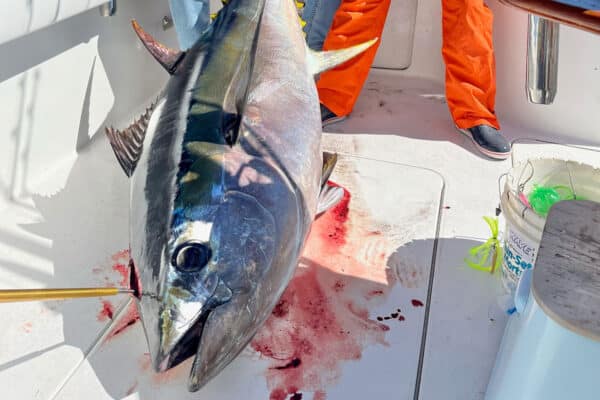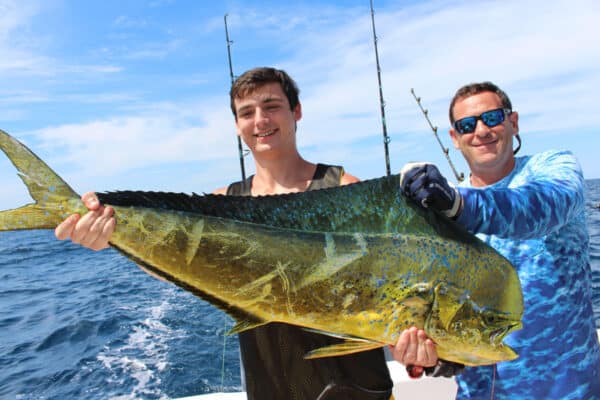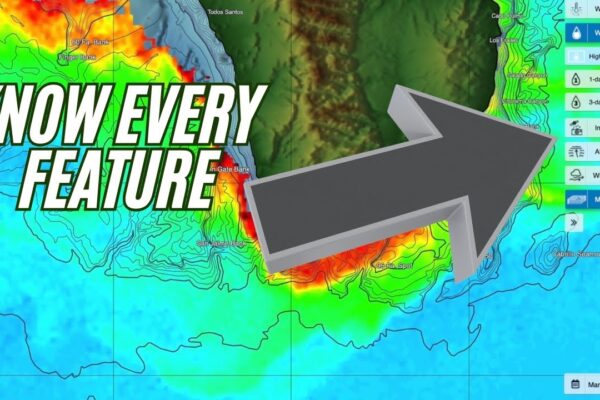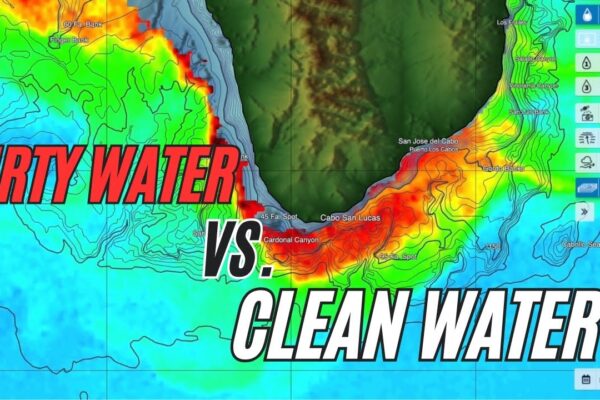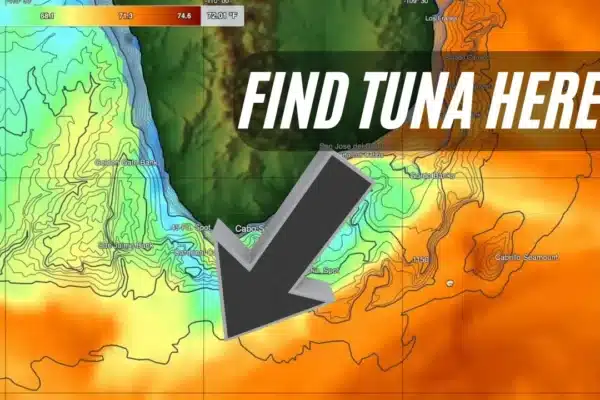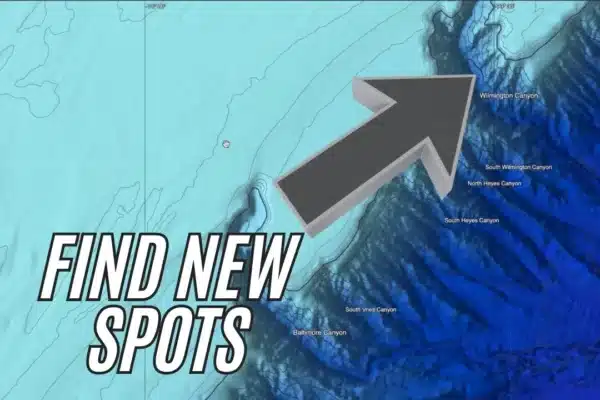
Fingers are crossed for a Mid-Atlantic bluefin bonanza.
Will those big bluefin make a run down the coast in the winter of 2024/25 like they did last year? Who the heck can say? Not us, but we do know one thing for sure: if they pull off a repeat performance you’ll want to be fully prepared to head out and hook up. Here are three top tactics that produced banner catches last year.
Fishing For… Big Striped Bass?!
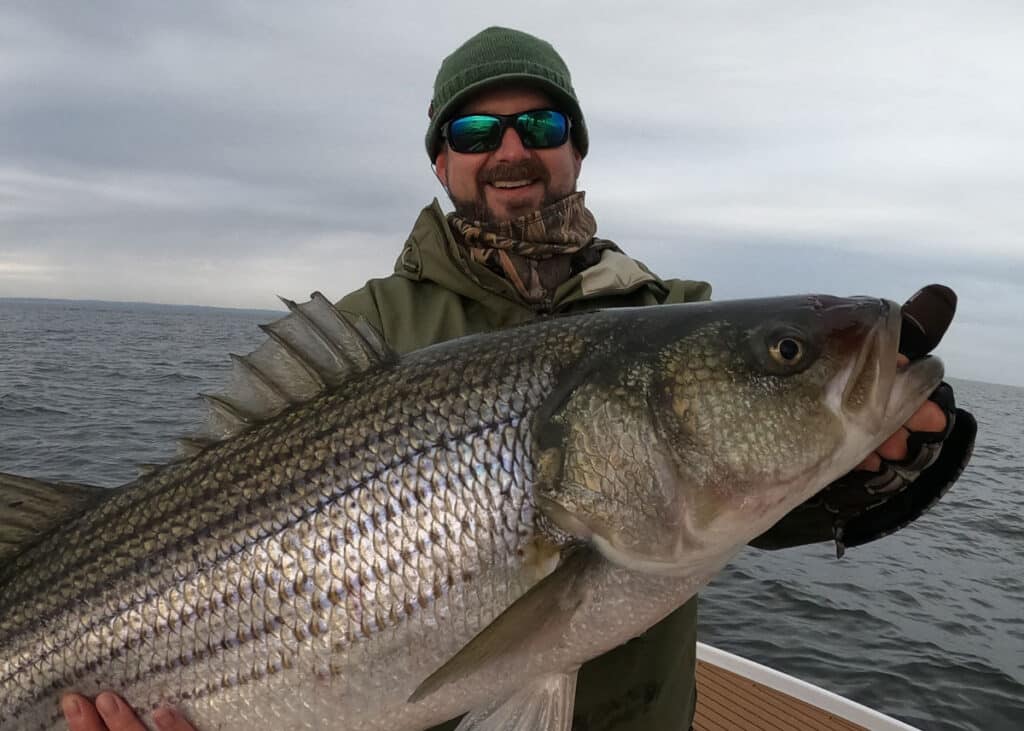
Well, not really. But fishing for stripers was what made anglers aware of the bluefin’s presence in the first place. Off the coast of Delaware, Maryland, and Virginia during December, many of us set out in the hopes of catching monster stripers as they migrated south just a few miles off the coastline. And many of us were shocked when our level-winders were slammed and stripped of every inch of line in a matter of seconds.
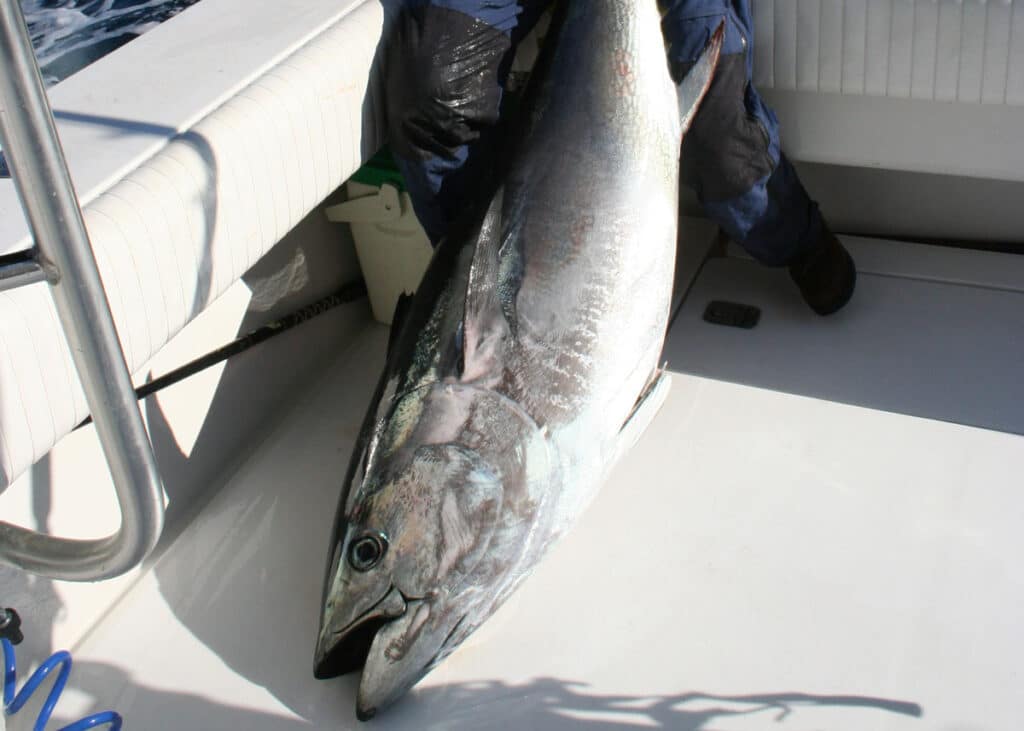
The take-away here is that the bluefin were in the same zone as the stripers, feeding on the same bait. The presence of mass schools of bunker drew the fish in and kept them there. And the bluefin are tempted by the same offerings we use to target the stripers, like Stretch 25 plugs and tandem rigs. Naturally you’ll want to upsize your gear and 50-class should be considered minimal for these big brutes, but swimming plugs (with through-wires and upgraded hooks) and tandems (with beefier leaders and swivels) are good offerings for both species when these fish push in close to shore and feed on bunker. Added bonus: you’ll probably hook into some stripers, too.
Note that towards the end of the run the fish did scatter out more, with many of the tunas pushing farther off the beach than the main body of stripers. But if we see a repeat of 2023, expect the bluefin to make their presence known where and when the stripers show up.
Troll the Classic
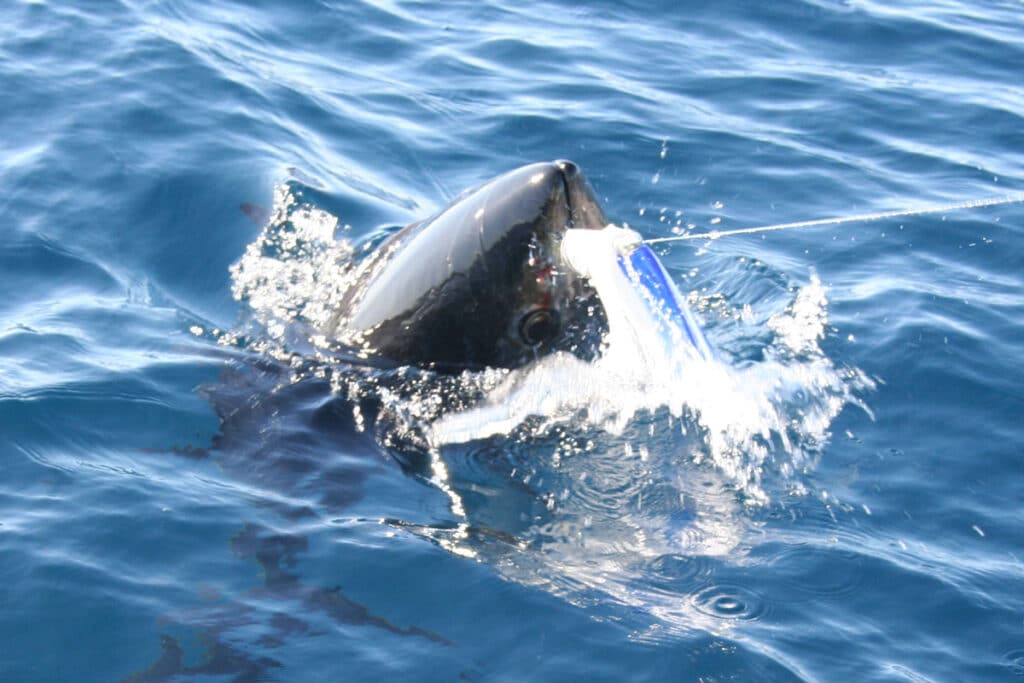
You know what we’re talking about: a blue/white Ilander, crystal Ilander, and similar bullet-head skirted lures rigged with a big ballyhoo, set way back or way-way back. This may well be the all-time champion for tempting big bluefin on the Atlantic coast, and it works in this scenario as well as it does in any other. This was particularly true last season when the bulk of the fish shifted a bit deeper and the aforementioned striper-type lures became ineffective.
Critical tip: if you start spotting fish down near bottom on the meter and you’re not getting hits, continue moving forward a bit until you think your offerings are in the fish’s proximity. Then shift into neutral. Let the Ilanders sink until you’re sure they’ve hit bottom, then shift back into gear and troll forward for a minute or two before going into neutral and letting them sink again. Give it two or three shots before you get back to nonstop trolling. Often, when the bait sinks down and then pops back up as you shift back into gear, you’ll get that bone-crushing strike you’ve been dreaming about.
Run and Gun
This is a bit different from what we usually think of as running and gunning, but the basic concept is the same: Don’t just go out to where they were last week, set out the lines, and wait for a bite. Instead, stay on the move until you locate the fish.
This means cruising for a few miles with all eyes peeled for birds, stopping and glassing the water 360-degrees, watching the radar, and then cruising a bit more. Keep it up until you spot some action. You’ll have a major-league advantage if you have a pair of gyroscopically stabilized binoculars with 14X or better magnification aboard, since these will allow you to spot birds from seven or eight miles as opposed to three or four with regular 7X marine binoculars. Using radar to spot the action is also very effective.
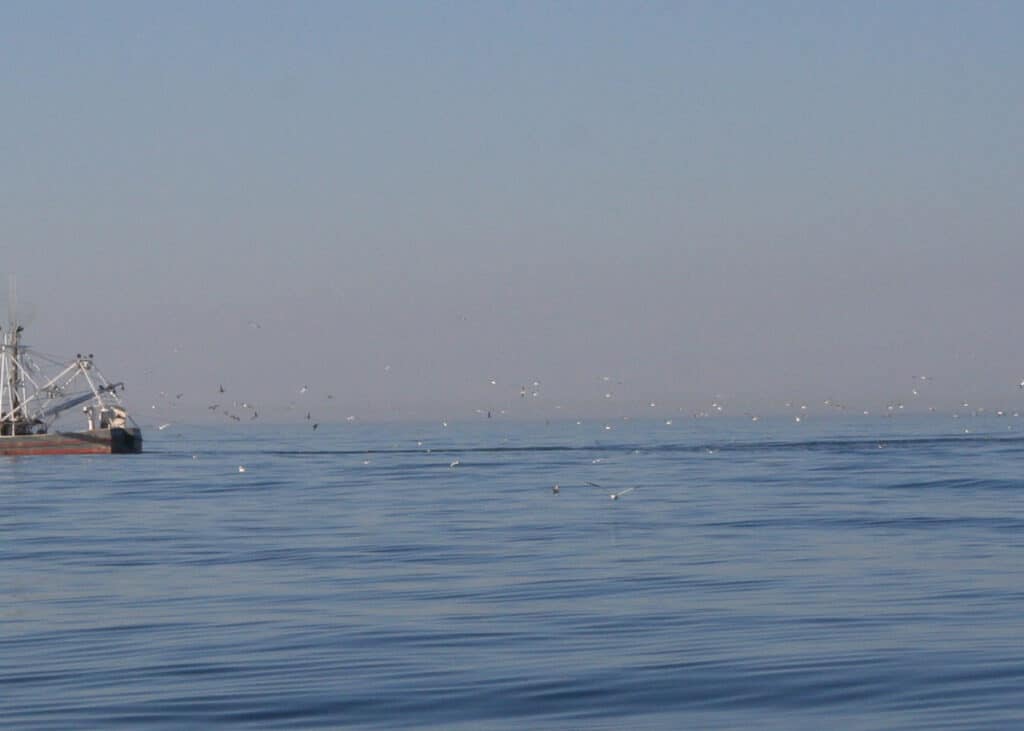
Bear in mind that for a large portion of last season’s action the best visual indication of the fish’s location wasn’t necessarily birds, it was the commercial boats out there netting bunker. It’s true that fleets attract fleets, and at times following the bunker boats did make for some mayhem with dozens and dozens of boats converging on one location. Everyone would prefer to find fish away from the crowd. But if you’re looking for the fastest and easiest way to spot action, these commercial boats are visible from miles away and make excellent radar targets. And at least last year, much of the time they were marking the hot zone.
Okay: ready to get into the ultimate tug-of-war?
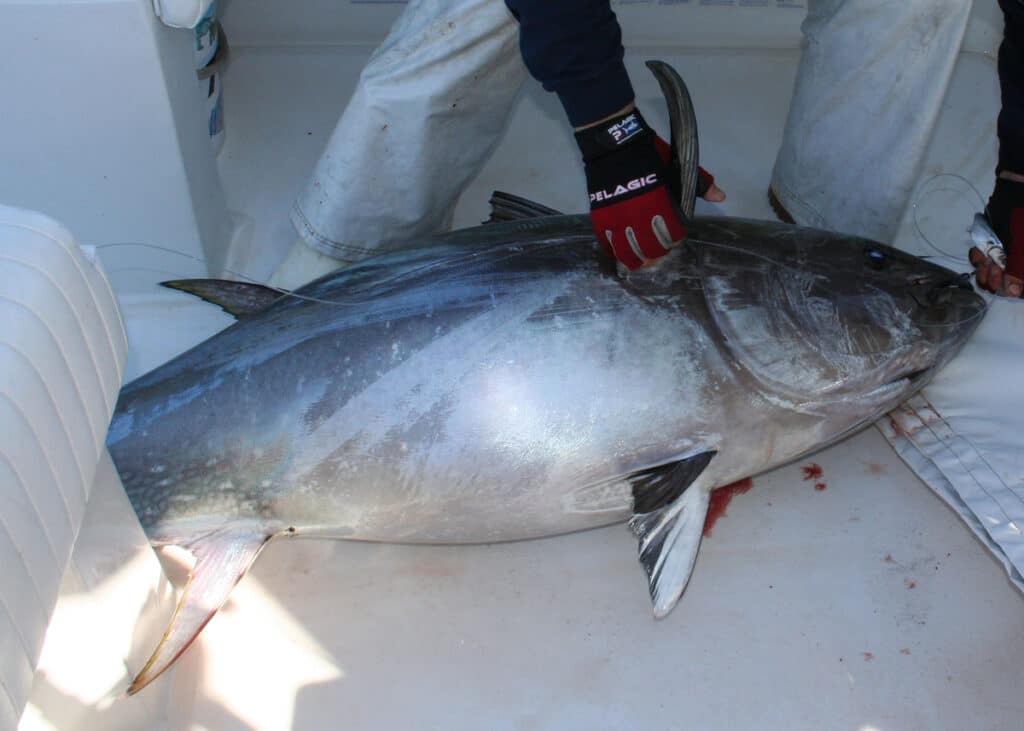
Many would say that hooking into a brawny bluefin fits the bill. Make sure your gear is up to snuff, you have a properly fitting harness, and settle in for the battle—it’s going to be a long one.

